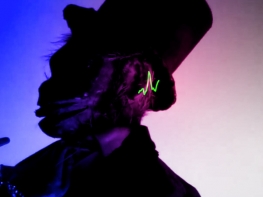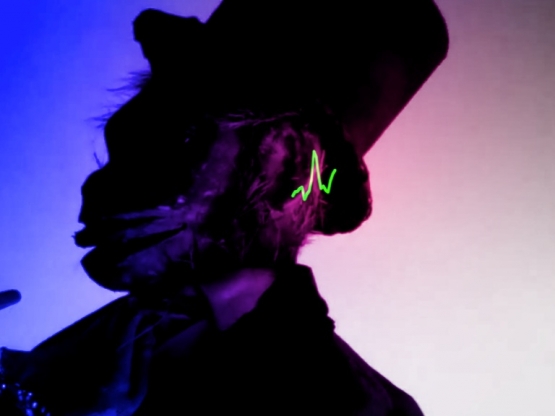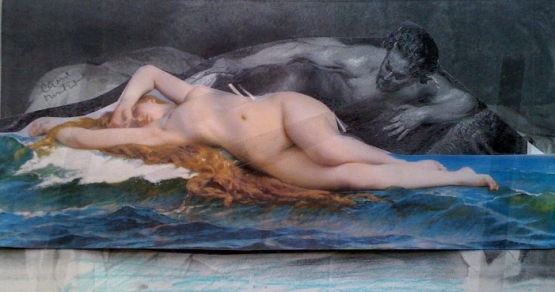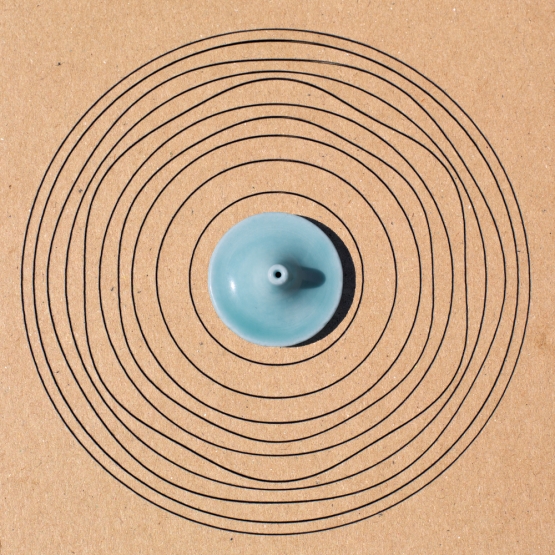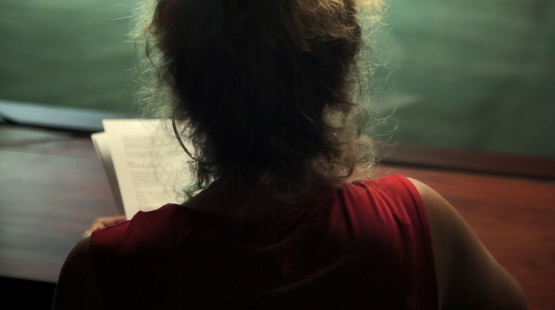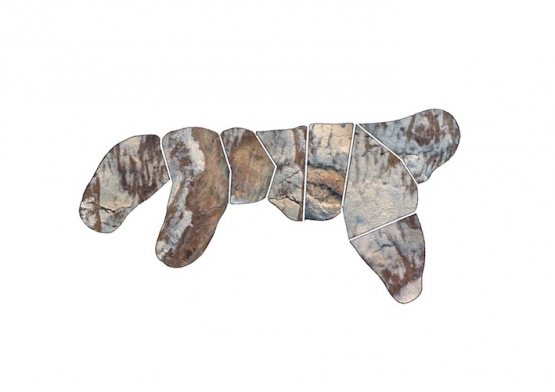Over the past few decades within the global artistic landscape, we have witnessed a significant exploration of new concepts such as virtual art, which has expanded the traditional supports for video, film and sound, in line with emerging technologies. This has led to artistic production in graphic computation, net art, digital animation, 3D production and interactivity, with ideas that used to belong to the realm of science fiction.
As Oliver Grau has noted in his work Virtual Art - From Illusion to Immersion, we are witnessing a creative exponent that is in permanent mutation, not only of its own concepts, but also at the level of reception and the impact on the spectator. Artistic processes are now in a new phase of transition, embracing materials that rupture established neologisms and posing major challenges not only to theorists and historians, but also to cultural institutions and agents that must find more active links with the world of virtualities.
The SONAE Media Art Award aims to promote spaces for experimentation and encourage the development of new concepts in the field of media art, whose versatility and quality have become consistent with the main lines of action of the world's most influential centres of art. It highlights artists whose work involves multimedia as a support and/or theme, both in an exploratory and innovative manner and from a critical and historical perspective, covering forms of contemporary creativity that range from image to sound. This includes explorations into media like video, computation, sound and mixed media, in which other forms of art such as performance, dance, cinema, theatre and literature can be be incorporated, thereby cementing its status as the most important art award in Portugal.
The five artists selected as finalists in this inaugural edition of Sonae Media Art Award were chosen among more than 150 applications. This grouping of new works shows the diversity and complexity of artistic languages that the concept of media art encompasses.
Through
these five projects, we witness a questioning of art's perceptive limits in
which concepts such as interactivity and the performative and immersive aspect
are highlighted in the formulation of a dialogue with the spectator. These
projects also reflect upon the traditional limits of art and science and the
roles of artist and spectator in the context of a new artistic map in which
communication will be forged within an increasing virtuality.
DOWN IN THE VALLEY by Diogo Evangelista is a grouping of video installations that question the relationship between the human, the robot and the primate.
IRRATIONAL MAN examines the limits of human cognition. In a slapstick narrative that appeals to synaesthesia nostalgia, we are guided by a chromatic oscillation that disturbs our cerebral hemispheres in a rhythmic unravelling that breaks the linearity of perception. This oceanic sensorality, tested by a voice over that confronts the gap between the body and the mind, provokes a strange actualization of our doubts, reflected in the machine-like gestures of the primate in front of us. IRRATIONAL MAN brings us closer to this Uncanny Valley, where our similitude with the robot is brought to the fore. Would we be able to accept the mechanism for producing emotions and aesthetic sensibilities?
SPINE POEM connects us with the gestural agility of a culinary artisan in a close-up tour of the making of an improbable recipe: fish spine. The deconstruction of the animal is choreographed with the detailed precision of a ritual while a storm rages outside. In this piece of science fiction, the sublimation of an element is carried out through the mechanisation of surgical gestures in an appeal to the exponential limit of human sophistication. Accompanying the syncopated structuralism of the fish spine, the film's sequences are interrupted by acid sound cuts.
MAGICIAN ́S END envelops the exhibition hall in a radioactive undertone by
presenting the surprise outcome that defeated the great master Houdini (1874-1926). The
famous magician, who became known for posterity for his celebrated escapes in
highly dangerous situations, as well as his battle against charlatans in the
world of illusionism, proved that he was a mere mortal when a rival caught him
off guard and defeated him. In MAGICIAN'S END, we
are haunted by the fatal trajectory of this kryptonite blow, which afflicts us ad aeternum in stop motion, proving that
ultimately all illusions fall to the ground.
CANTINA - FÁBULA
At the SONAE Media Art Award, Musa paradisiaca presents a new installation centred on the projection of "Fome animal" (2015) [Animal hunger], a 16mm film, and "Cantina—Fábula" (2015) [Canteen—Fable], two tables showing ceramic sculptures and its replicas in bread, to be consumed over the duration of the exhibition.
Cantina—Fábula
“Canteens” are meeting places where specific forms are shared and eaten. Each canteen includes a group of objects presented simultaneously as ceramic and as bread, the latter being an edible copy of the former. These two media (ceramic and bread) are alike insomuch as they share a mode of creating that is, in itself, a mode of thinking. Through these forms, which are thought up, created and consumed in a cycle of constant praise, offerings and sacrifice, these objects and, consequently, the “Canteens” claim a new medium in which being, thinking and eating are coincident and collective.
Created in collaboration with Diogo Cavaleiro and Tomás Fonseca, who have been present since the launching of this series, "Cantina – Fábula" also takes on the form of a film. For the first time, this is a “Canteen” that is centred on the search for an individual need, that of Fome animal, the title of the film with which it is associated and that is substantiated by the undefinable animal-like sculpture presented here, replicated and transformed into food. Whether in the ceramic object or in the bread object, it is divided into parts, so that one can take from it what one desires.
Fome animal
For Musa paradisiaca, the medium of film is a way of thinking about impossibilities, because it is in itself an agglutination of irremediably lost, albeit temporarily salvageable, forms. In the film "Fome animal", the eaters are observed from an animal’s point of view. Meeting at a bakery, a group of people prepare and celebrate an irrepeatable gathering around an animal that was killed for this purpose. PARASOMNIA
Civilization as a whole is on the verge of “losing a basic human faculty: the power of bringing visions into focus with our eyes shut.”
Italo Calvino
“Sleep is the last unleveraged form of human activity and it is violently threatened by a world in which the divisions between night and day, between rest and work, are disappearing (…).”
Megan Heuer in Who sleeps?
Based on Acácio Nobre's unfinished essay on sleep, insomnia and the absence of dreams (1890) and a study of the discoveries of how birds sleep by neurophysicists Luigi Rolando (1773-1831) and Jean Pierre Flourens (1794-1867), Parasomnia is a visual and sound installation that aims to encourage the "stimulation of melatonin production" and the "vapours of drowsiness necessary for inducing a rejuvenating sleep conducive to the practice of lucid dreaming".
In the first antechamber, whose main objective is to develop subtle respiration through the use of a multiple frame, each visitor is invited to wait. A wall of paintings unfolds in a movement that is imperceptible to an inattentive gaze but noticeable to scrutinising eyes.
In the second chamber, the visitor is invited to surrender to gravity and the inertia of a siesta is suggested. Accompanied by an ageing female voice at the foot of a bed worthy of a sultan, the visitor, lying prostrate, is placed at the limits of a performative contradiction: if they stay awake, they miss out on the experience that the installation offers them; if they sleep, they miss out on the experience that the installation presents.
Each visitor chooses when they want to leave the retirees and thereby cause the "death" of the voice that recites the 1001 tales.
Continuous loop.
Performance
19 December, the longest Saturday night of the year, will mark the 90th anniversary of Acácio Nobre's essay, which inspired this work. On this night, invited artists, writers, scientists and researchers will take over this installation from dusk to dawn and invade our sleep with their voices, ideas and foods, revealing how, when and what it means to sleep in a society that considers it to be an inevitable illness.
RESONO
Among humans, the reciprocity of an interactive experience depends upon the absence of a script, of a mutual openness towards the building of empathy, elevating a given connection, however fortuitous, to the quality of a singular moment. In contrast, the relationship we create with machines is that of masters and slaves: we expect them to be eternally at our beck and call to carry out all kinds of tasks and we react emotionally to them only when they make a mistake or stop collaborating in a docile manner. The same occurs in an interactive installation, where a machine-turned-performer is forced to react to any kind of stimulus in a diligent and submissive manner for the exclusive benefit of its transitory master. The question is: is it possible to have an interaction devoid of choice?
Can genuine empathy be developed between beings who are not free?
Resono is an interactive installation based on the principle that the basis of autonomy is the capacity to say, "No!" It consists of an ecosystem of 15 beings who await the arrival of a visitor, each of them with different emotions ranging from anxiety to curiosity. This is the first step in the development of an interaction, achieved through the courteousness with which one approaches the beings and the tenderness with which one sings to a small group of them. Gradually, and if patient, one can begin to hear tentative resonances that are actually how these beings learn to communicate with the unfamiliar stimulus by using imitation. From this point onwards, the story of each interaction will be unique and will depend on the delicate understanding of each of the participants' states of mind; in truly exceptional cases, it is possible for the entire ecosystem to come together for a collective performance. Each successful experience will live on in the dreams of each of the resono's beings and will mark the continual development of their personalities.
If reciprocity is actually a pre-condition for empathy, the same will occur with visitors.
Tatiana Macedo (1981)
1989
1989 is a new work created for the Sonae Media Art Award and is presented in the form of a multi-channel video installation with spacialised sound.
Based on my relationship with the images and sounds I have captured over the past few years, which make up my personal archive, as well as the recent semi-staged shoots that were done for this piece, I think of the film as a kind of extended essay that demands a constant reconfiguration of the real.
The film is articulated via a "geopolitics of knowledge and feeling" to open a dialogue on questions of perceptive subjectivity and its interaction with the structures of power in language and thought itself.
Lara has been a conference interpreter for 10 years. Born in Mozambique, she spent her first five years in what was then called Rhodesia (Zimbabwe). She studied in Swaziland until she was 17 at a school that was known for its fight against apartheid. I film her in a translation booth, reading the script that I developed. As she reads, one discovers that the thought lingering in the texts translates her experience. The situation is inverted. Borderzone thought and the translation of borders are her livelihood. Everything is translated, including the translator. Universalising European and Western values are questioned in the translation. “Europe must reflect on its (post)colonial and post-Cold War past. Asia is part of Europe and vice versa.“
I was 8 years old when I witnessed the fall of the Berlin Wall unfolding on television in 1989. “The images of that event that have been spread since the 1980s not only represent it; they are catalysers for action”. This is an idea associated with the "events" that led to Ceausescu's execution in Romania in 1989. In Beijing, thousands of people protested and were killed that same year.

